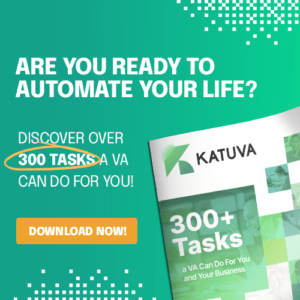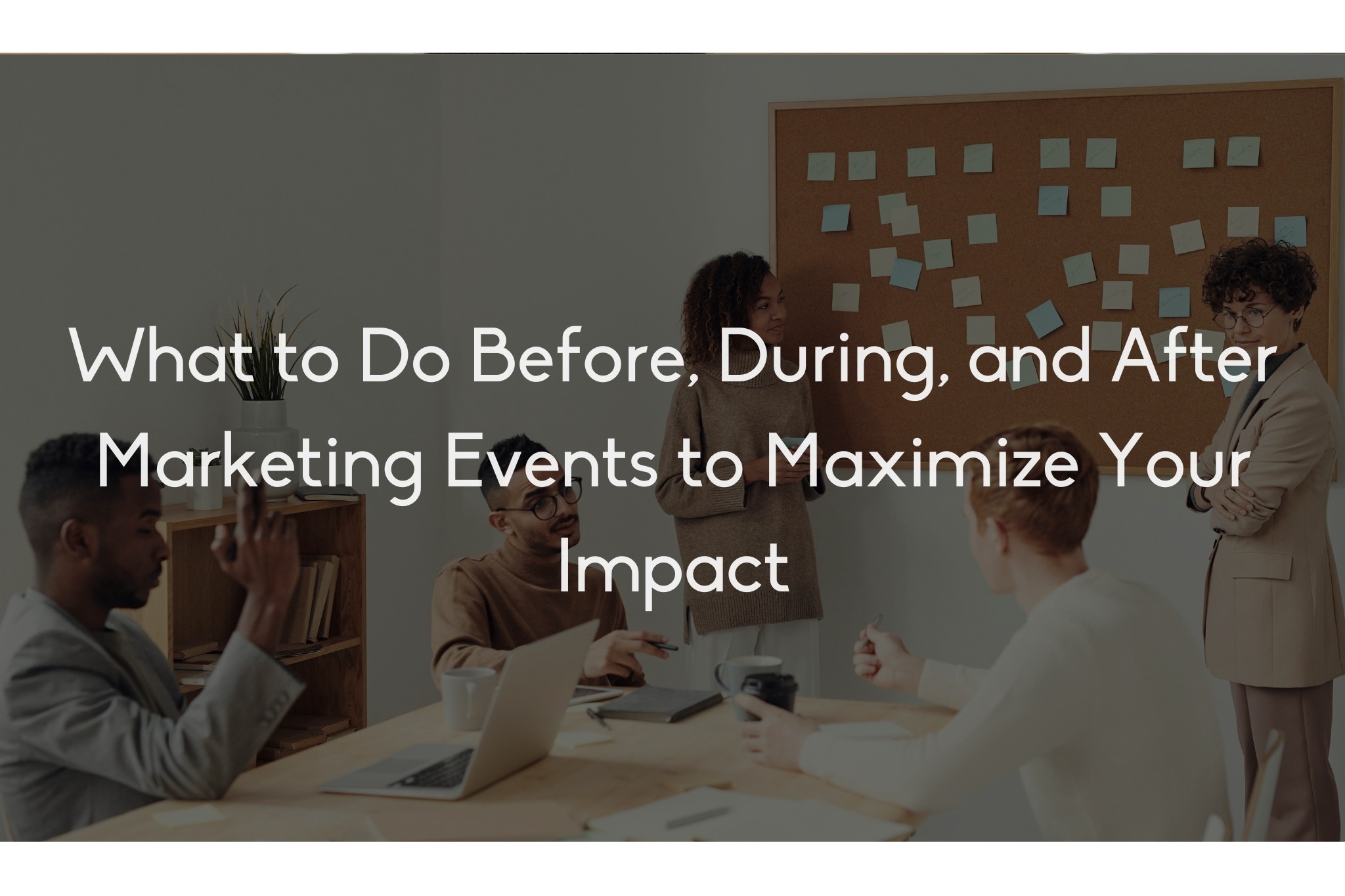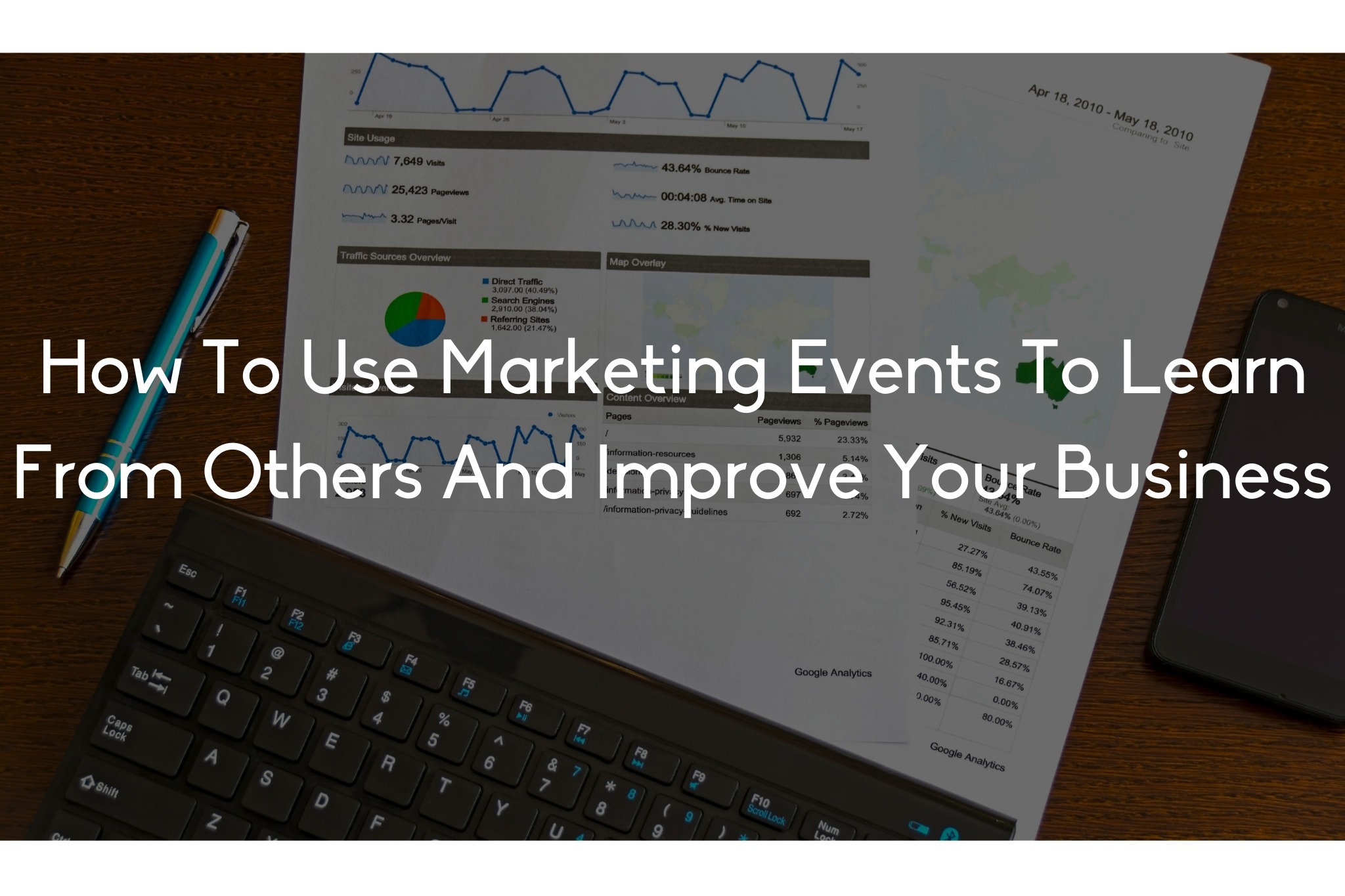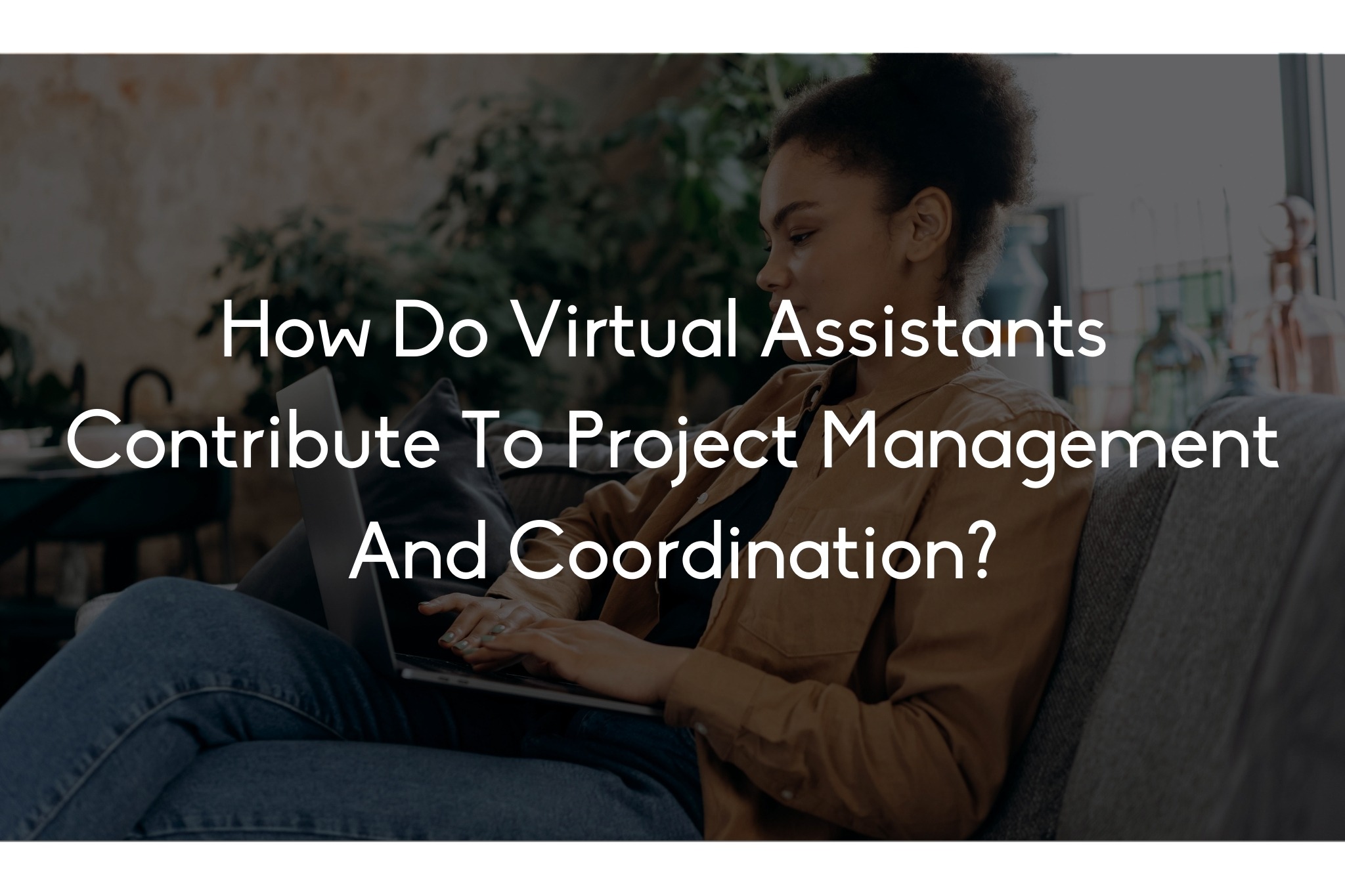
Marketing events are golden opportunities to connect with your audience, showcase your brand, and drive meaningful results. But attending an event isn’t enough; preparation, execution, and follow-up are key to maximizing your impact. Whether you’re a seasoned marketer or attending your first event, having a clear strategy for before, during, and after the event can make all the difference.
This guide walks you through actionable steps to take before, during, and after marketing events. By following these strategies, you can amplify your presence, strengthen connections, and achieve your goals.
Discover the essential strategies to prepare effectively, engage meaningfully, and follow up strategically at your next marketing event. These tips will help you make the most of every opportunity.
Before the Event: Lay the Groundwork
Define Your Goals
Start by identifying what you want to achieve. Are you aiming to generate leads, build brand awareness, network with industry professionals, or launch a new product? Clear goals will shape your entire approach. Setting specific, measurable objectives ensures you can evaluate your success afterward.
Research the Event
Understand the event’s theme, audience, and key players. Check the agenda, speakers, and exhibitors to identify sessions and opportunities that align with your objectives. Knowing who will be there helps you tailor your approach and prioritize the most valuable interactions.
Create a Pre-Event Marketing Plan
- Leverage Social Media: Announce your participation and share event-related content to build anticipation. Use eye-catching visuals and hashtags to engage your audience.
- Email Campaigns: Inform your audience about your attendance and invite them to connect with you at the event. Offer incentives like exclusive meetups or giveaways to drive interest.
- Collaborate with Organizers: See if you can be featured in promotional materials or co-host a session. This visibility can enhance your credibility and attract more attention.
Prepare Your Materials
- Branded Collateral: Ensure your business cards, brochures, and giveaways are ready and reflect your brand. Make your materials memorable and useful.
- Presentation Content: If you’re speaking or hosting a booth, rehearse your pitch and prepare engaging visuals. Use storytelling techniques to make your message more impactful.
- Technology Check: Test your devices, apps, and tools to avoid technical hiccups. Have backups ready in case of unexpected issues.
Schedule Meetings
Reach out to key contacts and schedule one-on-one meetings in advance. Use the event’s networking platform or your own network to secure time with prospects, partners, or influencers. Having pre-arranged meetings ensures you make the most of your time.
Train Your Team
If you’re attending with a team, ensure everyone understands their roles and key messages. Conduct a briefing session to align on goals and strategies. Role-playing scenarios can help your team handle common questions or challenges.

During the Event: Engage and Shine
Be Present and Proactive
Engage actively with attendees, speakers, and exhibitors. Attend sessions, participate in discussions, and make an effort to meet new people. Your energy and enthusiasm will leave a lasting impression.
Leverage Social Media in Real Time
- Live Updates: Share photos, quotes, and highlights from the event. Use behind-the-scenes glimpses to create a sense of exclusivity.
- Hashtags: Use the event’s official hashtags to join the conversation and increase your visibility. Engage with posts from other attendees to foster connections.
- Tag Influencers: Mention speakers, attendees, or brands in your posts to foster connections. Tagging relevant individuals can increase the reach of your content.
Showcase Your Expertise
If you’re presenting, ensure your session is engaging and interactive. Use real-world examples, ask questions, and encourage audience participation. Provide actionable takeaways that attendees can implement immediately.
Network Strategically
- Quality Over Quantity: Focus on meaningful conversations rather than collecting business cards. Building a few strong relationships is more valuable than superficial interactions.
- Listen Actively: Show genuine interest in others’ needs and challenges. Taking notes during conversations can help you remember key details.
- Follow Up Promptly: Send a quick thank-you message or connect on LinkedIn after meeting someone. Timely follow-ups reinforce the connection.
Monitor Your Booth or Presence
If you have a booth, make it inviting and interactive. Offer demos, host mini-events, or run contests to draw attendees. Ensure your team is approachable and well-prepared to answer questions. Use creative displays to capture attention and spark curiosity.
After the Event: Solidify Your Gains
Organize and Analyze Your Contacts
- Sort Your Leads: Categorize contacts by priority and potential. Identify hot leads who are ready to act and nurture colder ones with follow-up campaigns.
- Update Your CRM: Add new contacts and notes from your conversations to your customer relationship management system. Keeping detailed records helps maintain momentum.
Follow Up Strategically
- Personalized Emails: Send tailored messages to key connections, referencing your conversation or shared interests. Include a call-to-action to encourage the next step.
- Social Media Engagement: Interact with attendees’ posts and share a recap of your event experience. This keeps you visible and reinforces your relationships.
- Thank You Notes: Express gratitude to event organizers, collaborators, and new connections. A thoughtful thank-you can leave a lasting impression.
Evaluate Your Performance
- Review Your Goals: Assess whether you achieved your objectives and identify areas for improvement. Honest evaluation helps refine future strategies.
- Analyze Metrics: Measure engagement, leads generated, and social media reach. Use these insights to gauge your return on investment.
- Gather Feedback: Ask your team or attendees for input on what worked and what didn’t. Constructive feedback can guide your approach to future events.
Share Your Experience
- Blog Posts: Write a recap highlighting key takeaways and insights. Share lessons learned and how the event impacted your business.
- Case Studies: Showcase success stories or results from the event. Use data and testimonials to validate your achievements.
- Internal Debrief: Share lessons learned with your team to improve future event strategies. Collaborative reflection fosters growth and innovation.
Nurture Your New Relationships
Stay in touch with your new connections through follow-up meetings, collaborative opportunities, or consistent engagement on social media. Building long-term relationships can lead to partnerships and referrals.
Conclusion
Marketing events are more than just opportunities to show up; they’re platforms to create lasting impressions, build relationships, and drive business growth. By planning effectively, engaging meaningfully, and following up diligently, you can turn every event into a stepping stone for success. Remember, the effort you invest before, during, and after the event will determine the value you gain from it. With the right strategy, you’ll maximize your impact and leave a lasting mark on your audience. Your proactive approach can transform these events into powerful tools for achieving your business goals.






